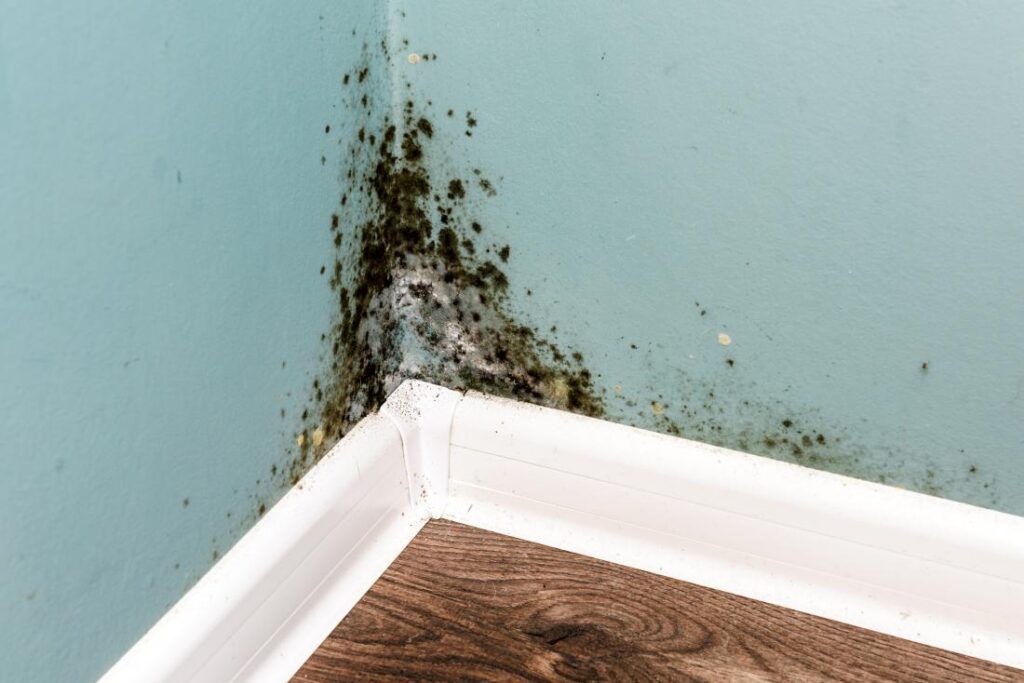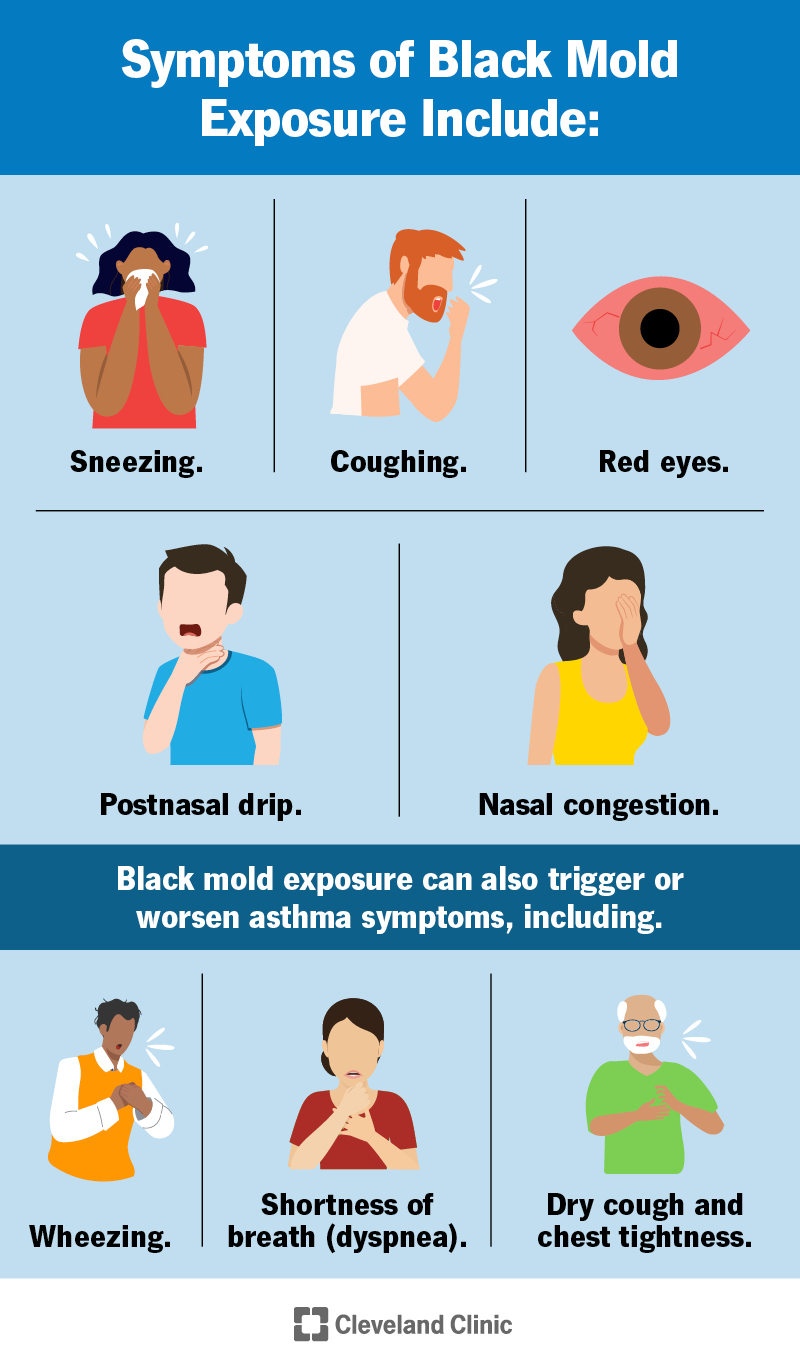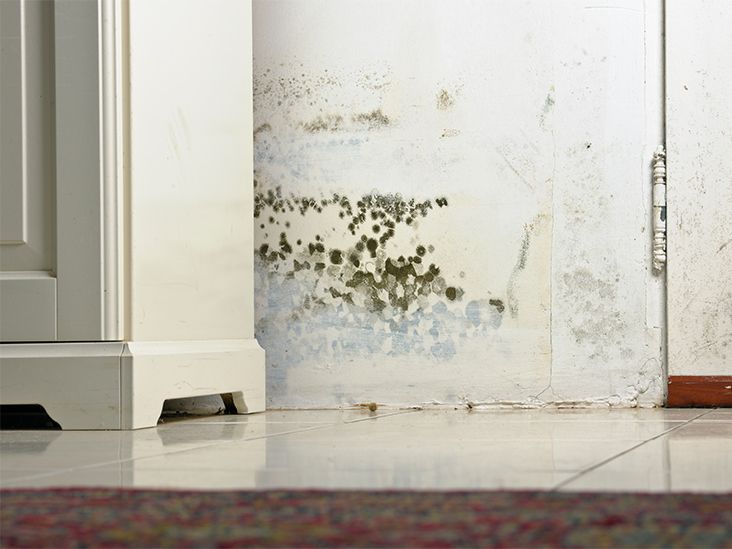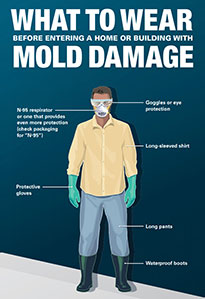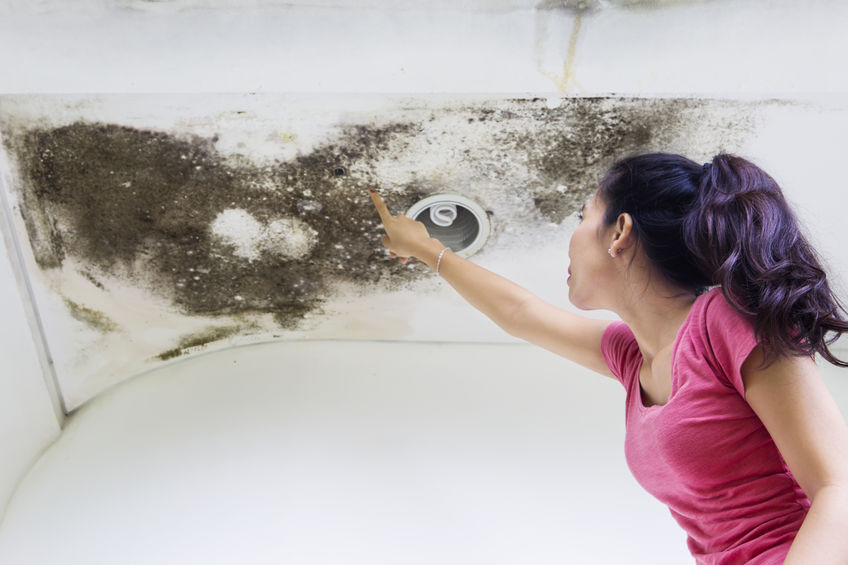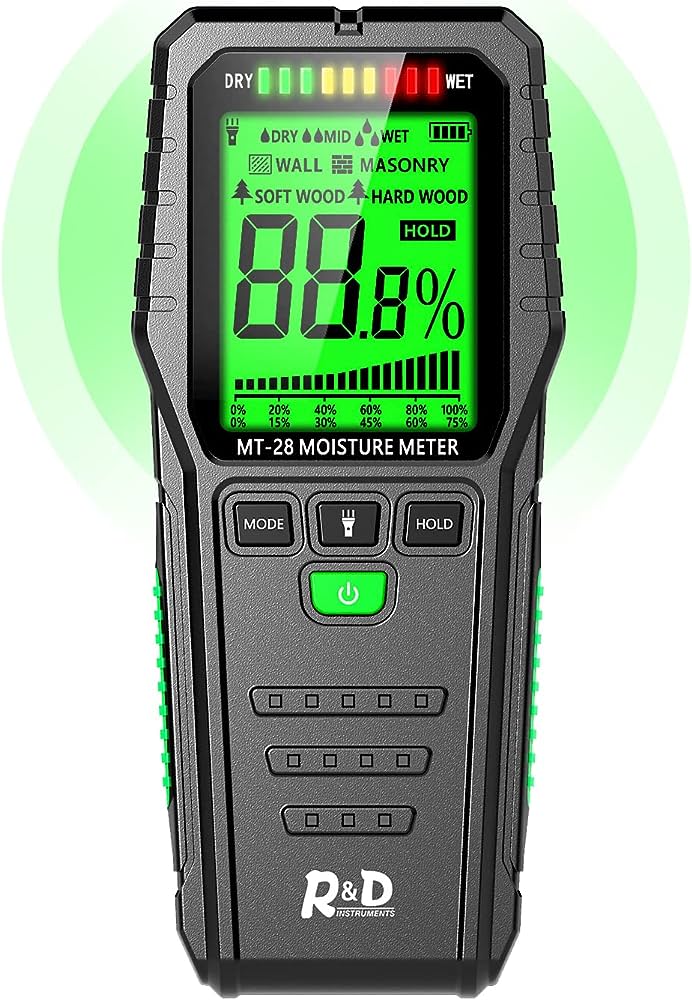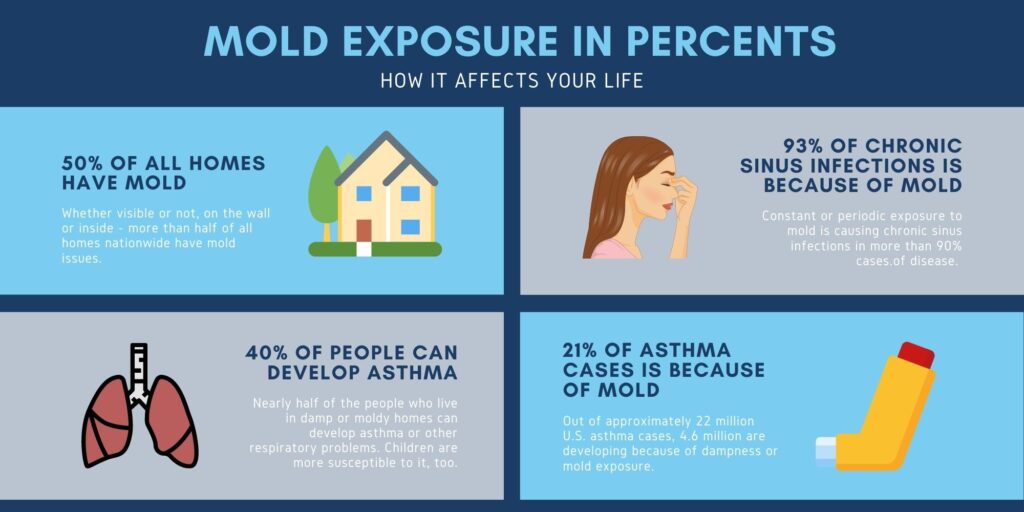Have you ever wondered how to prove that mold is the culprit behind your persistent health issues? In this article, you will discover the various ways in which you can uncover the truth and gather evidence to support your claim. From seeking professional mold testing services to monitoring your symptoms, you will learn how to confidently assert that mold is indeed making you sick. So, if you have been struggling with unexplained health problems and suspect mold may be the cause, read on to find out how to gather the proof you need.
Physical symptoms of mold exposure
Respiratory issues
Mold exposure can lead to a variety of respiratory issues. If you find yourself experiencing persistent coughing, wheezing, shortness of breath, or nasal congestion, mold may be the culprit. Mold spores in the air can irritate the respiratory system, causing discomfort and difficulty in breathing.
Skin rashes
Another physical symptom of mold exposure is the development of skin rashes. These rashes are often itchy and may appear as red, inflamed patches on the skin. If you notice these symptoms, it is important to consider whether mold exposure could be the cause.
Headaches and migraines
Headaches and migraines can be a result of mold exposure. Mold releases volatile organic compounds (VOCs) into the air, which can trigger headaches in susceptible individuals. If you frequently experience headaches or migraines in certain environments, mold could be a potential factor.
Sinus infections
If you find yourself frequently suffering from sinus infections, mold exposure may be the underlying cause. Mold spores inhaled into the nasal passages can cause inflammation and infection, leading to sinusitis. If you are experiencing recurring sinus problems, it is worth investigating whether mold is present in your environment.
Fatigue and weakness
Feeling constantly fatigued and weak can also be a symptom of mold exposure. Mold toxins can affect the immune system and disrupt normal bodily functions, leading to feelings of exhaustion. If you find yourself struggling with low energy levels and weakness, mold exposure could be a contributing factor.
Digestive problems
Mold exposure can affect the digestive system, causing issues such as nausea, diarrhea, and abdominal pain. Mold toxins can irritate the gastrointestinal tract and disrupt its normal function. If you are experiencing ongoing digestive problems without a clear cause, mold exposure should be considered as a potential factor.
Nosebleeds
Frequent nosebleeds can be a concerning symptom of mold exposure. Mold can irritate the nasal passages and cause them to become dry and prone to bleeding. If you are experiencing nosebleeds regularly, particularly in certain environments, it is important to investigate whether mold is present.
Joint and muscle pain
Some individuals may experience joint and muscle pain as a result of mold exposure. Mold toxins can trigger inflammation in the body, leading to discomfort and stiffness in the joints and muscles. If you are experiencing unexplained pain and stiffness, it is worth considering mold exposure as a possible cause.
Vision problems
Although less common, mold exposure can also cause vision problems. Some individuals may experience blurred vision, eye redness, or eye irritation due to exposure to mold spores. If you notice changes in your vision that cannot be explained by other factors, mold exposure should be considered as a potential cause.
Neurological symptoms
Mold toxins have the potential to affect the central nervous system, leading to various neurological symptoms. These can include difficulty concentrating, memory problems, dizziness, and even mood changes. If you are experiencing unexplained neurological symptoms, mold exposure should not be ruled out as a possible factor.
Medical diagnosis of mold-related illness
Clinical assessment
A healthcare professional experienced in mold-related illness will begin the diagnosis process with a clinical assessment. They will review your symptoms, medical history, and conduct a physical examination. This allows them to gather important information and begin forming a diagnosis.
Symptom tracking
Keeping a detailed record of your symptoms is crucial in determining if they are related to mold exposure. Note down the type of symptoms, their frequency, and their severity. This information can be valuable in establishing a pattern and identifying potential triggers.
Medical history
Your medical history provides important context for the healthcare professional. Be sure to provide details of past illnesses, allergies, and any other relevant health information. Mold-related illness can be influenced by pre-existing conditions, so sharing your medical history is essential.
Physical examination
A physical examination will be conducted to assess your overall health and identify any physical signs that may suggest mold-related illness. The healthcare professional will examine your respiratory system, skin, and other relevant areas to look for any abnormalities.
Allergy testing
Allergy testing is often recommended to determine if you have an allergic reaction to specific types of mold. This can involve skin prick tests or blood tests to identify antibodies that indicate an allergic response. Allergy testing can be helpful in determining if your symptoms are mold-related.
Blood tests
Blood tests can be used to measure specific biomarkers that indicate mold exposure or related inflammation in the body. These tests can provide objective evidence of mold-related illness and help guide treatment options.
Biotoxin testing
Biotoxin testing involves analyzing urine or blood samples to detect mycotoxins, which are toxic substances produced by certain types of mold. This testing can provide direct evidence of mold exposure and help confirm a mold-related illness diagnosis.
Imaging tests
Imaging tests such as X-rays, CT scans, and MRIs may be ordered to assess any damage or inflammation in the respiratory system, sinuses, or other affected areas. These tests can provide visual evidence of mold-related complications.
Pulmonary function tests
To assess lung function and determine any respiratory abnormalities, pulmonary function tests may be conducted. These tests measure how well you inhale and exhale air, providing valuable information about the impact of mold on your respiratory system.
Neurocognitive testing
Neurocognitive testing evaluates cognitive function, including memory, attention, and problem-solving skills. Mold-related illness can affect neurological function, and these tests can provide insight into any cognitive impairments associated with mold exposure.
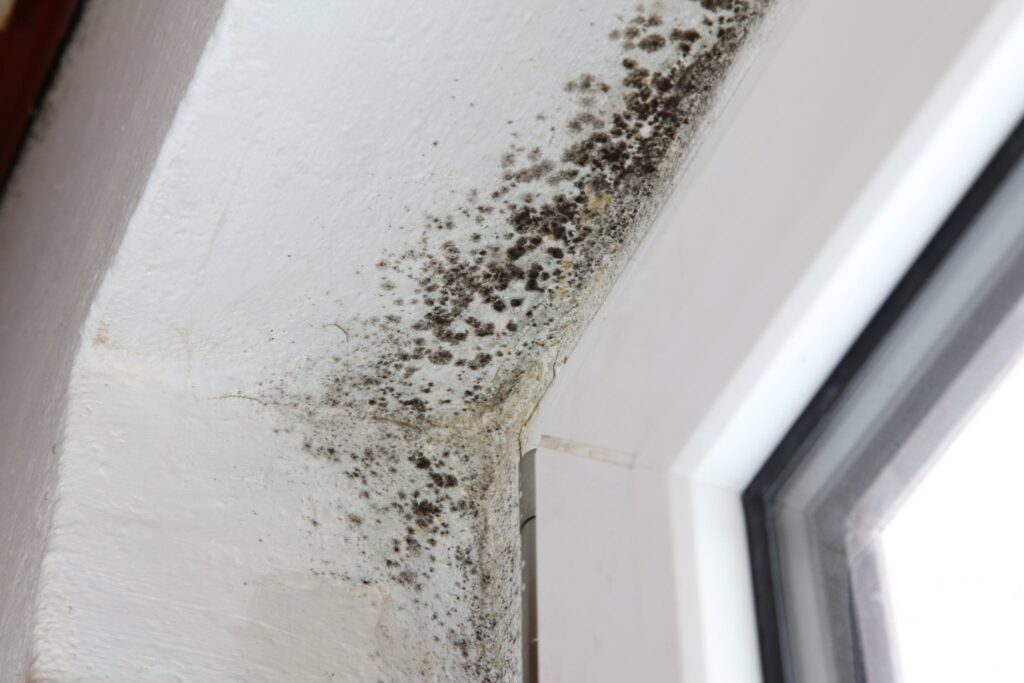

Identifying mold exposure in your surroundings
Visual inspection
Conducting a visual inspection of your surroundings is an important first step in identifying potential mold exposure. Look for visible signs of mold growth, such as discolored or fuzzy patches on walls, ceilings, or other surfaces. Pay attention to areas that are prone to moisture, as mold thrives in damp environments.
Professional mold inspection
If you suspect mold but are unable to identify it visually, it is advisable to consult a professional mold inspector. These specialists are trained to detect hidden mold growth and assess the extent of contamination. They may use specialized tools and techniques to identify mold sources and measure indoor air quality.
Air quality testing
Air quality testing involves taking air samples from different areas of your environment and analyzing them for mold spores. This testing can help determine the concentration and types of mold present in the air. It is a valuable tool for identifying mold exposure and evaluating the overall air quality in your surroundings.
Surface testing
Surface testing involves collecting samples from visible mold growth or suspicious areas and analyzing them for mold species and spore count. This type of testing can provide additional confirmation of mold presence and help guide remediation efforts.
Dust sampling
Dust sampling involves collecting dust samples from various surfaces and analyzing them for mold spores. Mold spores can settle in dust particles, making dust sampling an effective method for detecting mold presence. This type of testing can be particularly useful in identifying hidden mold sources.
Hidden mold detection
Hidden mold can be challenging to detect, as it may be growing behind walls, under flooring, or in other concealed areas. Infrared cameras and moisture meters are commonly used by professionals to identify hidden mold sources by detecting temperature variations and moisture levels.
Testing personal belongings
Mold can also grow on personal belongings such as clothing, furniture, and household items. If you suspect mold exposure, it is important to test these items for mold spores. This can involve surface testing, air sampling, or bringing in a professional to assess the items more comprehensively.
Testing in different seasons
Mold growth and spore release can vary depending on the season. Testing your surroundings during different seasons can provide a more comprehensive understanding of mold exposure and help identify patterns. Mold levels may be higher during certain times of the year, so testing across seasons is recommended.
Monitoring mold growth
Regularly monitoring for mold growth is essential for early detection and prevention. Keep an eye on areas prone to moisture, such as bathrooms, kitchens, and basements. If you notice any signs of mold growth, take immediate action to address the issue and prevent further contamination.
Identifying moisture sources
Identifying and addressing moisture sources is crucial in preventing and controlling mold growth. Inspect your environment for any leaks, water damage, or areas with high humidity. Fixing these issues promptly can help prevent mold growth and reduce the risk of mold-related illness.
Connecting symptoms with mold exposure
Track and record symptoms
To establish a connection between your symptoms and mold exposure, it is important to track and record your symptoms consistently. Use a symptom diary to document the type and severity of symptoms, their frequency, and any potential triggers or patterns you notice.
Document exposure incidents
Keep a detailed record of any incidents where you suspect mold exposure, such as visits to mold-contaminated buildings or exposure to mold during water damage incidents. Note down dates, locations, and the duration of exposure. This information can be valuable in establishing a link between your symptoms and mold exposure.
Identify patterns and triggers
Review your symptom diary and exposure incidents to identify any patterns or triggers that consistently coincide with your symptoms. This can help you pinpoint specific environments or situations that may be contributing to your mold-related illness.
Consider timing and duration of symptoms
Take note of the timing and duration of your symptoms in relation to potential mold exposure incidents. Certain symptoms may appear immediately after exposure, while others may take longer to manifest. Understanding the timeline of your symptoms can provide valuable insight into their cause.
Consult with medical professionals
Seeking medical advice and consultation is essential in connecting your symptoms with mold exposure. Share your symptom diary and exposure incidents with your healthcare provider to help them understand your situation better. They can provide insight and guidance based on their expertise.
Seek second opinions
If you are unsure or unsatisfied with a diagnosis, seeking a second opinion is a valid option. Different healthcare professionals may have varying experiences and perspectives on mold-related illness. Obtaining multiple opinions can help validate your concerns and ensure comprehensive evaluation.
Connect with support groups
Joining support groups or online communities focused on mold-related illness can provide valuable guidance and emotional support. Engaging with others who have experienced similar symptoms can offer reassurance and helpful advice throughout your journey.
Share experiences with experts
Connecting with experts in the field of mold-related illness can provide you with additional insights and knowledge. Share your experiences with professionals such as environmental hygienists, mold remediation specialists, and indoor air quality consultants. Their expertise can help you better understand your situation and guide you towards appropriate solutions.
Research scientific studies
Stay informed about the latest scientific studies on mold-related illness. Research can provide valuable evidence and information to support your case. Look for reputable sources and studies conducted by experts in the field to ensure you are basing your knowledge on reliable information.
Consider exposure history
Reflect on your exposure history and any past incidents that may have contributed to your mold-related illness. Mold exposure can occur in various environments, such as homes, workplaces, schools, or public buildings. Considering your exposure history can help establish a timeline and provide insight into potential sources of mold exposure.
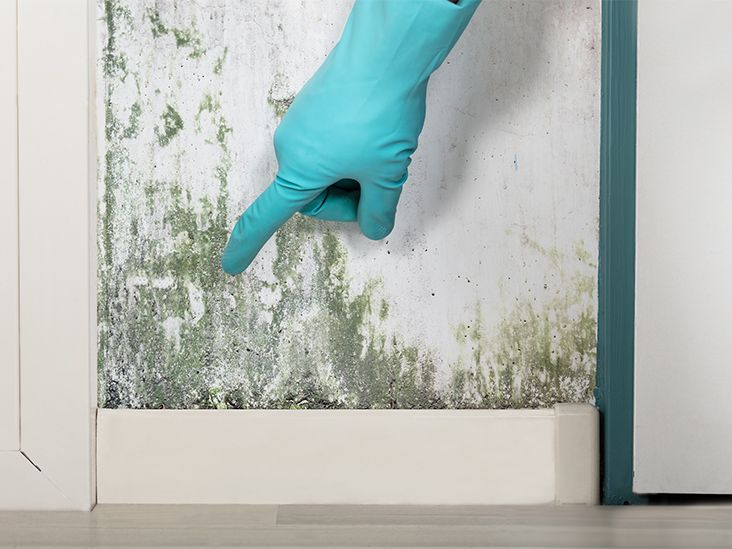

Eliminating other potential causes
Rule out other illnesses
To ensure an accurate diagnosis, it is important to rule out other potential causes of your symptoms. Work with your healthcare provider to explore all possible explanations and undergo appropriate medical tests. This process can help determine whether your symptoms are solely due to mold exposure or if there are other contributing factors.
Consider environmental factors
Environmental factors, such as air pollution, allergens, or chemical sensitivities, can mimic the symptoms of mold-related illness. Assess your environment for other potential triggers and consider whether they may be contributing to your symptoms. Addressing these factors can help improve your overall health.
Evaluate lifestyle factors
Lifestyle factors, including diet, exercise, and stress levels, can impact your overall well-being. Evaluate your lifestyle choices and identify any aspects that may be affecting your health. Adopting healthy habits and reducing stress can contribute to your recovery and well-being.
Examine diet and nutrition
Proper nutrition plays a crucial role in maintaining overall health. Ensure you are consuming a balanced diet and maintaining adequate hydration. Nutrient deficiencies or food sensitivities can exacerbate symptoms and hinder recovery. Work with a healthcare professional or nutritionist to optimize your dietary choices.
Assess stress levels
High levels of stress can negatively impact your immune system and overall health. Evaluate your stress levels and explore stress reduction techniques such as meditation, exercise, or therapy. Managing stress effectively can contribute to a healthier and more resilient body.
Review medication side effects
Certain medications can cause side effects that mimic the symptoms of mold-related illness. Review your current medication list with your healthcare provider to determine if any medications may be contributing to your symptoms. Adjustments to your medication regimen may be necessary.
Evaluate workplace conditions
If your symptoms are worsened or triggered by your workplace environment, it is essential to evaluate the conditions thoroughly. Assess ventilation systems, the presence of potential mold sources, and other environmental factors that may impact your health. Discuss your concerns with your employer and, if necessary, involve occupational health professionals.
Assess home environment
Evaluate your home environment for potential mold sources and other environmental factors that may be impacting your health. Pay attention to areas prone to moisture such as kitchens, bathrooms, and basements. Address any leaks, water damage, or ventilation issues promptly to create a healthier living space.
Consider allergies or sensitivities
Allergies or sensitivities to other substances can contribute to your symptoms and complicate the diagnosis of mold-related illness. Consult with an allergist or immunologist to identify any potential allergic reactions or sensitivities that may be contributing to your health issues.
Consult with healthcare professionals
Work closely with healthcare professionals who specialize in mold-related illness and environmental health. Share your concerns and collaborate with them to eliminate other potential causes. Their expertise can provide valuable insights and guide you towards appropriate testing and treatment options.
Seeking professional help
Find a healthcare provider experienced in mold-related illness
Finding a healthcare provider who has experience and knowledge in mold-related illness is essential. Look for doctors, naturopaths, or other healthcare professionals who have expertise in diagnosing and treating mold-related health conditions. Their specialized knowledge can ensure comprehensive evaluation and appropriate care.
Consult with an environmental hygienist
Environmental hygienists specialize in assessing and managing indoor environmental hazards, including mold. These professionals can conduct thorough inspections of your home or workplace and provide guidance on proper remediation techniques. Consulting with an environmental hygienist can help you create a healthier living or working environment.
Work with a certified mold remediation specialist
If you discover mold growth in your environment, it is crucial to work with a certified mold remediation specialist. These professionals are trained to safely remove and remediate mold-contaminated areas. Hiring a certified specialist ensures that the mold removal process is conducted according to best practices and industry standards.
Contact an occupational health professional
If your symptoms are related to your workplace environment, it is advisable to contact an occupational health professional. These experts are skilled in assessing workplace hazards and can evaluate your workplace conditions for potential mold exposure risks. They can provide recommendations for improving your work environment and ensuring your safety and well-being.
Reach out to an indoor air quality consultant
Indoor air quality consultants specialize in assessing and improving the air quality in buildings. They can conduct comprehensive air quality testing, identify potential sources of contamination, and offer recommendations for improvement. Consulting with an indoor air quality consultant can contribute to creating a healthier living or working environment.
Engage with a building biologist
Building biologists specialize in evaluating the impact of indoor environments on human health. They can assess your home or workplace for potential health hazards, including mold. Engaging with a building biologist can provide expert insights into the health risks associated with your environment and guide you towards appropriate remediation measures.
Consult a toxicologist
If you believe you have been exposed to toxic mold or mold-related toxins, consulting with a toxicologist is advisable. Toxicologists are experts in assessing the health effects of toxic substances, including mycotoxins. They can provide guidance on testing, treatment options, and potential health risks associated with mold exposure.
Consider legal advice
In severe cases where mold exposure has caused significant health issues or property damage, it may be necessary to seek legal advice. An attorney specializing in mold litigation can help you understand your rights and explore legal options, such as filing a lawsuit or seeking compensation for damages.
Evaluate insurance coverage
Review your insurance policies, including homeowner’s or renter’s insurance, to determine if mold-related illness is covered. Some policies may provide coverage for mold remediation or medical expenses related to mold exposure. Evaluate your coverage and consider consulting with an insurance professional to better understand your options.
Explore support from advocacy organizations
There are advocacy organizations and support groups dedicated to raising awareness about mold-related illness and advocating for better regulations. Seeking support and connecting with these organizations can provide valuable resources, information, and a community of individuals facing similar challenges.
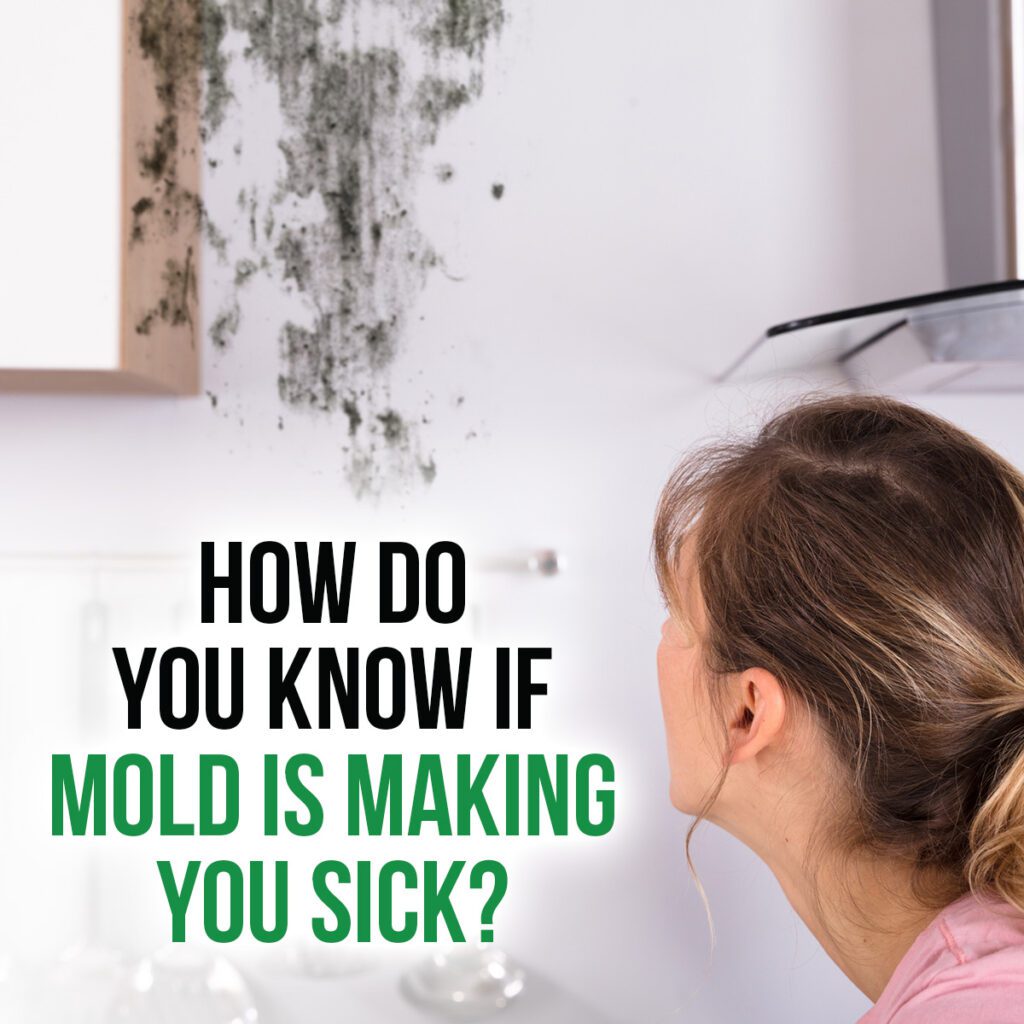

Additional steps for proving mold-related illness
Keep a detailed symptom and exposure diary
Continuing to track your symptoms and exposure incidents is crucial in providing evidence of the impact of mold exposure on your health. This documentation can serve as a valuable record and help establish a clear link between your symptoms and mold exposure.
Collect evidence of mold in your environment
Gathering evidence of mold in your environment can further strengthen your case. Take photographs or videos to document visible mold growth and any conditions that may contribute to its presence. This evidence can assist in investigations, insurance claims, or legal proceedings.
Maintain a record of medical tests and treatments
Keeping a record of all medical tests conducted and treatments received is essential for proving your mold-related illness. This documentation can serve as evidence of the steps taken to address your health concerns and support your case.
Consider genetic testing
Genetic testing can provide insight into potential genetic vulnerabilities or predispositions to mold-related illness. Certain genetic variations can affect an individual’s ability to detoxify and respond to mold exposure. Discuss the possibility of genetic testing with your healthcare provider to determine if it may be beneficial in your situation.
Participate in clinical research studies
Participating in clinical research studies can contribute to the growing body of scientific knowledge on mold-related illness. Research studies often require participants with specific health conditions or exposures, and your involvement can help advance our understanding of mold-related health issues.
Collaborate with public health agencies
Engage with local or national public health agencies to report your mold-related illness and contribute to public health data. Collaboration with these agencies can help raise awareness, inform policy changes, and ensure that mold-related health issues are taken seriously.
Document insurance claims and disputes
If you encounter difficulties with insurance claims related to your mold-related illness, document any interactions, denials, or disputes with your insurance provider. Maintain copies of all relevant correspondence and seek legal advice if needed to protect your rights and ensure fair treatment.
Seek validation from multiple experts
Obtaining validation from multiple healthcare professionals and experts can strengthen your case. Seek opinions and assessments from professionals experienced in mold-related illness, remediation, and environmental health. Their support and expertise can provide credibility to your claims.
Engage in mold litigation if necessary
In cases where mold-related illness has resulted in significant damages and remediation costs, engaging in mold litigation may be necessary. Consult with an attorney specializing in mold-related litigation to understand your legal options, gather necessary evidence, and initiate legal proceedings if appropriate.
Educate others and raise awareness
Sharing your experiences and knowledge about mold-related illness can raise awareness and help others facing similar challenges. Educate your friends, family, and community about mold exposure risks, prevention strategies, and the potential health consequences. Participate in educational initiatives to promote better understanding and prevention of mold-related health issues.
Preventing mold-related illness
Control humidity levels
To prevent mold growth, it is important to control humidity levels in your environment. Keep indoor humidity below 50% by using dehumidifiers or proper ventilation. This can help inhibit mold growth and reduce the risk of mold-related illness.
Fix leaks and water damage promptly
Address any leaks or water damage in your home or workplace immediately. Moisture is a primary contributing factor to mold growth. Timely repairs and remediation can prevent mold from establishing itself and spreading further.
Promote proper ventilation
Ensure proper ventilation in all areas of your environment. Use exhaust fans in bathrooms and kitchens to remove excess moisture and humidity. Proper ventilation helps keep the air circulating and reduces the risk of mold growth.
Use mold-resistant building materials
When building or renovating, consider using mold-resistant building materials. These materials are designed to inhibit mold growth and can be especially beneficial in moisture-prone areas such as bathrooms and basements.
Regularly clean and inspect HVAC systems
Regularly clean and inspect heating, ventilation, and air conditioning (HVAC) systems. Mold can thrive in HVAC systems if they are not properly maintained. Regular maintenance, cleaning, and filter replacements can prevent mold growth and improve indoor air quality.
Maintain a clean and clutter-free living space
A clean and clutter-free living space is less prone to mold growth. Regularly clean surfaces, remove excess clutter, and ensure proper air circulation. This reduces the likelihood of mold growth and contributes to a healthier living environment.
Monitor indoor moisture levels
Use moisture meters or hygrometers to monitor indoor moisture levels. These devices can help you identify areas of high humidity or excess moisture that may contribute to mold growth. Address any problematic areas promptly to prevent mold-related issues.
Avoid carpeting in moisture-prone areas
Carpeting can trap moisture and create an ideal environment for mold growth. Avoid installing carpeting in areas prone to moisture, such as basements or bathrooms. Choose flooring materials that are less likely to retain moisture, such as tile or hardwood.
Properly dry and ventilate damp areas
If you experience water intrusion or flooding, it is crucial to ensure proper drying and ventilation of affected areas. Use fans, dehumidifiers, and open windows to facilitate drying and reduce the risk of mold growth. Prompt action can prevent long-term mold-related issues.
Avoid storing items in damp or humid places
Avoid storing items in damp or humid areas, as they can promote mold growth. Use sealed containers or storage solutions to protect belongings from moisture damage. Regularly inspect storage areas to ensure they remain dry and mold-free.


Seeking emotional and mental support
Understand the emotional toll of mold-related illness
Living with mold-related illness can take a toll on your emotional and mental well-being. Understand that it is normal to experience a range of emotions, including frustration, anxiety, and even depression. Acknowledging and actively addressing these emotions is essential for your overall well-being.
Join online support communities
Connecting with others who have experienced mold-related illness can provide a sense of community and understanding. Join online support communities, forums, or social media groups to share experiences, exchange advice, and find emotional support throughout your journey.
Seek therapy or counseling
If mold-related illness is affecting your mental health significantly, consider seeking therapy or counseling. A mental health professional can provide guidance in coping with the challenges you face and help develop strategies to manage stress and emotions effectively.
Connect with mold illness support groups
Joining mold illness support groups in your community can provide valuable support and resources. These groups are often led by individuals who have experienced mold-related illness themselves and can offer firsthand insights and advice.
Share experiences with friends and family
Educate your friends and family about your mold-related illness and the impact it has on your life. Sharing your experiences can foster understanding and empathy. Loved ones may offer practical assistance and emotional support during difficult times.
Practice stress reduction techniques
Engage in stress reduction techniques such as meditation, deep breathing exercises, or yoga. These practices can help manage the emotional toll of mold-related illness and promote overall well-being. Find techniques that work for you and incorporate them into your daily routine.
Engage in self-care activities
Prioritize self-care activities that promote your overall well-being. This can include engaging in hobbies, participating in activities that bring you joy, getting enough rest, and nurturing positive relationships. Investing time in self-care can help improve your mental and emotional resilience.
Educate loved ones about mold illness
Educate your loved ones about mold exposure risks and the potential health consequences. Help them understand the importance of prevention and the impact mold-related illness can have on your life. Their support and awareness can make a significant difference in your journey.
Advocate for better mold regulations
Get involved in advocacy efforts to raise awareness about mold-related illness and advocate for better regulations. Contact local representatives, participate in public hearings, or support organizations pushing for stricter mold regulations. Your voice can contribute to positive change and prevent future cases of mold-related illness.
Celebrate milestones in recovery
Acknowledge and celebrate milestones in your recovery journey, no matter how small. Overcoming mold-related illness can be challenging, and recognizing your progress is important. Whether it is improved symptoms, a healthier living environment, or increased knowledge, take time to acknowledge and appreciate your achievements.
Conclusion
Proving that mold is making you sick may require a comprehensive approach that includes recognizing the physical symptoms of mold exposure, seeking medical diagnosis, identifying mold exposure in your surroundings, connecting symptoms with mold exposure, eliminating other potential causes, seeking professional help, taking additional steps for proving mold-related illness, preventing future mold-related illness, and seeking emotional and mental support. Remember, it is essential to consult with healthcare professionals and experts along the way to ensure a proper evaluation, treatment, and support throughout your journey to recovery.

